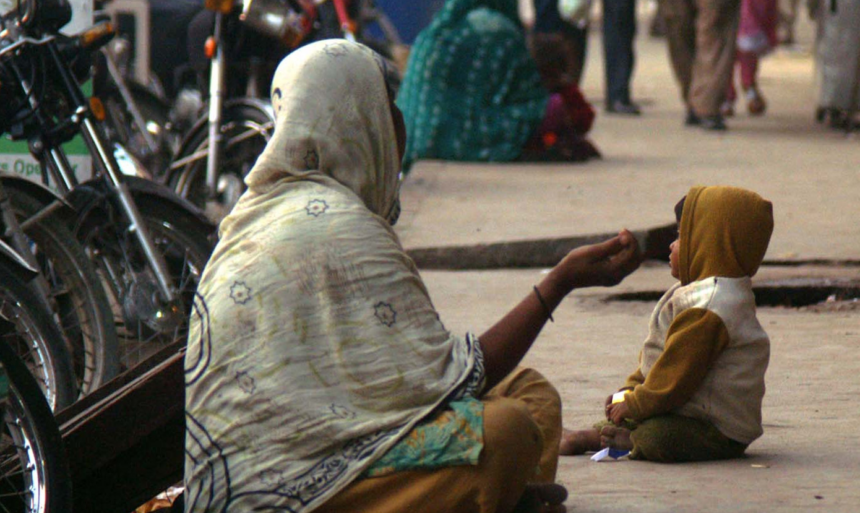Understanding the Problem
Begging is a persistent issue in many urban areas, and even smart cities are not immune to this social challenge. Hyderpora Bye Pass Chowk, TRC traffic red-light, etc a crucial entry point into the picturesque Kashmir Valley, presents a stark contrast to the region’s natural beauty. The presence of professional beggars at this key location not only tarnishes the aesthetic appeal but also raises concerns about the underlying social and economic issues. Addressing this menace requires a multifaceted approach that includes immediate relief measures, long-term rehabilitation, and policy interventions.
Professional begging in urban areas often operates through organized networks. These networks exploit individuals, including children and the elderly, forcing them into a life of begging. In places like Hyderpora Bye Pass flyover Chowk, tourist centers, these networks capitalize on high foot traffic and the presence of tourists, making it a lucrative spot. For many years, I have seen many beggars with the same prescription laminated in hand and children drinking “soft drinks and potato chips”, is a big family affair scam. The scenario I’m describing is not uncommon and is a recognized issue in many urban areas worldwide. It often involves organized begging operations where individuals, including children, are used to solicit money under false pretences. Here are some insights into the situation:
Organized Begging
Many of these operations are run by networks that exploit vulnerable individuals, including children. They might be forced or coerced into begging and are often given specific props, like fake prescriptions, to elicit sympathy and increase earnings.
Fake Medical Documents
The use of laminated prescriptions or medical documents is a tactic to make the plea for help seem more legitimate and urgent. These documents are often fabricated or exaggerated.
Child Exploitation
Children are frequently used in these scams because they are more likely to evoke sympathy from passersby. The sight of children eating snacks can indicate that the money collected is not being used for essential needs but rather for non-essential items, or it might suggest that the children are being given such items to keep them content and compliant.
Profiting from Sympathy
The goal of these networks is to profit from the compassion of others. The money collected often goes to the organizers rather than the individuals who are seen begging. Law enforcement in some areas actively works to dismantle these networks, but it can be challenging due to the complex and often hidden nature of these operations.
Charitable Contributions
For those who wish to help, it is often more effective to contribute to reputable charities and organizations that work to address the root causes of poverty and homelessness. These organizations can provide resources and support in a structured and ethical manner.
If you encounter such situations regularly, it is so irritating you might consider reporting it to local authorities or organizations that specialize in combating human trafficking and exploitation. Raising awareness and supporting systemic solutions are crucial steps in addressing this issue.
Impact on the Smart City’s Image
For Kashmir, which relies heavily on tourism, the sight of beggars at key entry points can leave a negative impression on visitors. This not only affects tourism but also reflects poorly on the city’s governance and social health.
Underlying Socio-Economic Issues
Begging is often a symptom of deeper socio-economic problems such as unemployment, lack of education, and inadequate social safety nets. Addressing begging effectively requires tackling these root causes.
Steps to Curb Beggary: Immediate Relief Measures
- Regular Monitoring and Patrolling: Deploying regular monitoring and patrolling teams at Hyderpora Bye Pass Chowk can help deter beggars from congregating in this area. The presence of law enforcement can act as a deterrent to both beggars and those controlling them.
- Anti-Begging Squads: Specially trained anti-begging squads should be established. These squads can work in coordination with local police to identify and remove beggars from public spaces, ensuring that those in need are directed towards appropriate support services.
- Public Awareness Campaigns: Educating the public about the negative impacts of giving money to beggars is crucial. Campaigns can encourage people to donate to charities and support services instead. These campaigns can be disseminated through various media, including social media, local newspapers, and community meetings.
Long-Term Rehabilitation: Shelters and Rehabilitation Centers
Establishing shelters and rehabilitation centers is essential. These centers should provide basic necessities like food, shelter, and medical care, along with counseling and rehabilitation services to help beggars reintegrate into society.
- Vocational Training Programs: Providing vocational training to beggars can equip them with skills needed to gain employment. Training programs should be tailored to the local job market and include a range of skills from traditional crafts to modern trades.
- Education for Children: Special emphasis should be placed on educating children involved in begging. Ensuring that these children receive a proper education can break the cycle of poverty and prevent future generations from resorting to begging.
Policy Interventions: Stringent Anti-Begging Laws
Enforcing stringent anti-begging laws is necessary to dismantle organized begging networks. This includes penalizing those who exploit vulnerable individuals and profiting from begging activities.
- Social Welfare Programs: Strengthening social welfare programs can address the root causes of begging. Programs should focus on providing financial assistance, healthcare, housing, and employment opportunities to marginalized communities.
- Coordination with Non-Governmental Organizations (NGOs): Partnering with NGOs that specialize in poverty alleviation and social services can enhance the effectiveness of government initiatives. NGOs can offer expertise, additional resources, and innovative solutions to tackle begging.
- Urban Planning and Infrastructure Development: Incorporating inclusive urban planning can help reduce begging. This involves developing infrastructure that supports the needs of all citizens, including those at risk of poverty and homelessness. Creating more public spaces, affordable housing, and accessible services can reduce the economic disparities that contribute to begging.
Community Involvement: Engaging Local Communities
Community involvement is critical in addressing the issue of begging. Local residents can play a vital role by reporting begging incidents, participating in community watch programs, and supporting rehabilitation efforts.
- Creating Employment Opportunities: Engaging local businesses in creating employment opportunities for rehabilitated beggars can be beneficial. This could include providing incentives for businesses that hire individuals from vulnerable backgrounds or establishing social enterprises.
- Public-Private Partnerships: Public-private partnerships can be leveraged to fund and support anti-begging initiatives. Private companies can contribute through corporate social responsibility (CSR) programs, offering financial support, resources, and expertise.
Technological Solutions: Smart Surveillance Systems
Implementing smart surveillance systems at key locations like Hyderpora Bye Pass Chowk, TRC crossing can help monitor and deter begging activities. These systems can provide real-time data to law enforcement agencies, allowing for quick response and effective management.
Mobile Applications for Reporting and Assistance
Developing mobile applications that allow citizens to report begging incidents and request assistance can enhance coordination between the public, law enforcement, and social services. These apps can also provide information about nearby shelters and support services.
Addressing the issue of beggary, particularly the presence of professional beggars at Hyderpora Bye Pass, TRC Chowk etc, requires a comprehensive and multi-pronged approach. Immediate relief measures, long-term rehabilitation, and robust policy interventions are all necessary to curb this menace. Community involvement and technological solutions can further enhance these efforts.
By tackling the root causes of begging and providing sustainable support to vulnerable populations, we can transform the entry points to Kashmir into true gateways to paradise, reflecting the region’s natural beauty and cultural richness.
(Author besides being a medical doctor is very active in positive perception management of various moral and social issues. He can be reached at: [email protected] & twitter @drfiazfazil)








